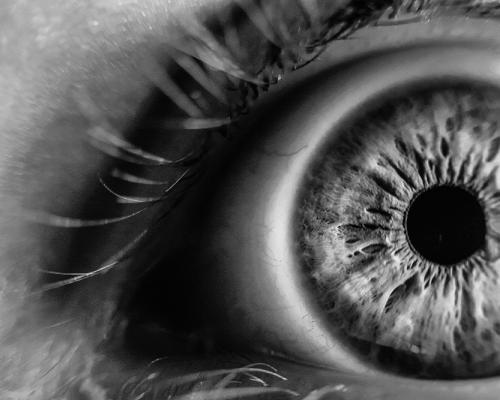The APET™ model: standing cognitive therapy on its head
Joe Griffin and Ivan Tyrrell describe a biologically-based theory which explains the shortcomings of purely cognitive approaches and why effective therapies can work fast.
DENNY was given a life sentence for murder when he battered his friend to death on a freezing cold night for no reason that he could articulate. He and his best friend Nick were 'down and out'. Having failed to get jobs which they had travelled to a specific town in search of, they had both hitchhiked and trudged, cold and hungry, the 90 miles back to their home town.
On arrival, they huddled in a derelict building, desperately burning any wood they could tear down to make fires for warmth. Nick quite reasonably suggested that they go to Denny's mother's house, which was only 500 yards away, and sleep on her front room floor. Denny wouldn't hear of it. When he ran out of arguments against Nick's pleadings, he battered and killed him.
Why? All Denny could say in explanation was, "I just went too far". Denny had no idea why he felt compelled to kill his best friend, only that the 'need' was overwhelming. It subsequently emerged, through psychiatrist Dr Bob Johnson's work with him in Parkhurst Prison [1], that Denny had felt driven to murder because he was still frozen in a state of terror of his mother who had battered him cruelly as a boy. That he was now adult and a strapping six feet three and a half inches and she was 85 and five feet two did not impinge as a reason not to fear her any more.
This famous case serves to epitomise, in stark form, the shortcomings of the basic idea underlying the origins of cognitive therapy — that it is beliefs and thoughts which give rise to emotions and behaviours. Denny's fear was powerfully reactivated by a pattern from the past. It was emotion which led to the belief that he must kill, not vice versa.
The case provides a highly graphic example of how extremely strong emotional reactions precede conscious understanding and reasoning. This can be explained in terms of what is now known about how the brain works and, we propose, has important ramifications for how we can carry out therapy most effectively.
New understandings
Using new understandings about the functioning of the brain, we have developed a theory we have called the APET™ model. It is, in effect, a necessary updating and enlarging of the model underlying cognitive therapy, which was first developed well before the current explosion of knowledge about brain function.
The basic fallacy underlying the cognitive approach doesn't detract from the power of cognitive therapy — it is highly successful, particularly when coupled with behaviour therapy, because it acknowledges the reciprocal interaction between cognition and emotion. But it may well limit the scope and thinking of its practitioners when treating mental disorders, and extends the time taken to do so.
As long ago as the year 2000, clinical psychologist Pat Frankish commented in her presidential address to the British Psychological Society, which centred on thought and feeling, "I do not ... deny the value of the cognitive approach or the research findings. Rather I aim to warn against too many eggs in the same basket, and to remind us all that the complexity of the human brain cannot be reduced to its individual components without some considerable loss."
Faulty thinking
Before we explain the meaning and purpose of the acronym APET™, we need to look first at the theory which underpinned cognitive therapy in its stance that changing faulty thinking processes is the key to changing inappropriate behaviour and emotions, and to see where it falls short of current neurophysiological knowledge.
The first cognitive therapy was rational emotive therapy (RET) devised in the 1950s by disenchanted psychoanalyst Albert Ellis. (Since 1993 the therapy has been called rational emotive behaviour therapy — REBT — to reflect the fact that people's thoughts, feelings and actions are integrally related and inevitably influence each other.) Its aim was to identify flaws in people's thinking that can have adverse emotional consequences.
Ellis proposed that the two most common maladaptive thoughts are "I am worthless unless I am completely competent in everything I attempt to do" and "Everyone must love and approve of me." Such maladaptive thoughts, which place impossible demands on individuals, inevitably lead to anxiety, depression or other abnormal behaviours, he believed.[2]
He thought it was important to disabuse clients of the unhelpful but common belief that it is events or situations which cause them to feel or act in certain ways. For instance, if someone feels anxious on arrival at a first therapy session, they might conclude that coming to therapy is making them anxious, instead of realising that it is their expectations or fears about the therapy that are making them anxious.
The ABC model
He illustrated this idea neatly in his ABC model. The A stands for activating agent — any situation or stimulus that prompts a reaction. The C stands for consequences — either feelings or actions. The incorrect assumption, he said, is that C is caused by A. In reality, said Ellis, C is caused by B which stands for beliefs — the thoughts, images, perceptions and conclusions that we draw from A. (In the updated REBT, A stands for adversities and B for belief-behavioural system.)
As holding unhelpful or outmoded beliefs can undoubtedly cause mental distress, this cognitive approach represented a giant leap forward in therapeutic terms. It enabled therapists to concen trate on helping clients change faulty thinking in the here and now, instead of vainly rooting about in their pasts.
Aaron Beck, another former psychoanalyst, took the ideas further and developed cognitive restructuring therapy. Here he concentrated primarily on classifying and identifying the thought disorders which he believed were underlying all psychological disorders.[3] Cognitive therapists have continued to add to and refine his categories ever since. We may be broadly familiar with cognitive-speak from categories such as catastrophising ("I've a headache; it must be a brain tumour"), overgeneralising ("Joan is a better person than I am because she is a good cook"), fault-finding ("the company was out to get me"), anthropomorphism ("computers and I don't get on"), etc.
In sum, Ellis, Beck and most others who wrote on cognitive approaches took the stance that psychological problems occur because thinking is defective. We maintain that this is not so. It has always been 'emotional responses to situations' that leads to problems: a conclusion clearly pointed to by the findings of brain research.
Emotions
Biological information processing cannot happen without emotion – it informs all our decision making. Thus the popular idea that we have an unruly emotional and a rational brain that attempts to keep a check on it is wrong. Our neural circuits operate through networks, and all networks are interconnected.
The parts of the brain most concerned with processing emotions first developed in our distant mammalian ancestors to deal with instinctive behaviours, such as eating and mating and surviving. The role of a structure called the amygdala was to look out for the interests of the ‘self’ and thus highly important was its role in promoting survival by alerting the organism to possible danger and triggering the physiological fight or flight response.
In essence, the amygdala — so-named because it is almond shaped and amygdala is Greek for almond — was (and still is) the organism's emotional alarm system, continually scanning the environment and interpreting each new stimulus in terms of whether it was safe or suspect. In colloquial terms, it was asking, "Can I approach this or not? Can I eat this or will this eat me? Will I fight (and win) or should I flee?"
However, it would hardly be economic in energy terms for the amygdala to go on full alert each time that it saw a tree, for example. It needed to be able to recognise that a tree is not normally a source of danger. And it did that by a process that we term pattern matching, which still underlies our mental functioning today.
Pattern matching
All mammals are programmed with species-appropriate instinctive behaviours during REM sleep while still fetuses in the womb.[4] REM sleep accounts for a high proportion of sleep in fetuses and newborns and drops off markedly as an organism starts to mature. The laying down of instinctive templates at these times explains all our species-specific behaviours, such as birds' ability to know what materials to use to build nests, wild animals' ability to recognise a predator, and babies' knowledge of the need to locate the nipple and to search out human faces to establish bonding.[5]
But these instinctive patterns cannot be too specific. They need to be flexible enough to enable them to be completed in different ways in different environments.
So a human baby will accept the teat of a bottle from which to take milk; baby birds will recognise a range of the kinds of sounds that their parents may make and infants will be able to speak the language that they hear around them, whatever it is. The more complex the life form, the more rich and varied are the instinctive templates laid down and the more flexibility available to it to complete the pattern in the environment.
The pattern-matching process is, then, an instinctive part of human brain functioning. It is behind our natural inclination to describe one thing in terms of another ("Such and such is like ...") and express ourselves in metaphor.
Dreams have been shown to be exact pattern matches or metaphors for emotionally arousing concerns from the day that have not been expressed before bedtime.[6] The often strange scenarios we dream during REM sleep at night are metaphorical renderings of those concerns which serve to deactivate them (this is not the same as resolving them), thus reducing emotional arousal in the brain and freeing us to deal with whatever demands the next day brings. So the same process, REM sleep, that first programmes instinctive behaviour in the form of genetically anticipated patterns, is also the means by which 'left-over' patterns of stimulation from waking are deactivated each night.
Pattern matching is what happens when a tree looms into view and is recognised not to be a threat or when a certain other animal appears and is instantly recognised as one. This happens within the first few milliseconds of the stimulus having been perceived.[7]
With the further development of the cerebral cortex and reason, and more sophisticated brain networking, we humans now have a much greater range of responses available to us than to our long-ago ancestors when presented with stimuli in the environment. We can bring more diversity of reasoning to a strange situation — the knowledge, for instance, that the man seemingly blatantly blocking the path of our car isn't an aggressor but a traffic policeman.
However, when the stimulus is one which causes significant emotional arousal — something crashes to the ground and we jump aside — the ability to reason gets swamped, because this now appears to be a survival issue. It is the amygdala which pattern matches and reacts before brain networks more concerned with ‘executive control’ even get a look in. This finding had great bearing on our development of the APET™ model.
Emotion before reason
The amygdala's ability to be one jump ahead of the cerebral cortex was the discovery of researcher Joseph LeDoux. He found that certain fear signals from the senses, once relayed to the thalamus, are immediately sent along a neuronal 'fast track' to the amygdala, arriving half a second before signals relayed by the usual route reach the cerebral cortex.[8] That half a second is a long time in brain response terms.
In effect, the amygdala can have us reacting before executive control areas of the brain have started to weigh up the evidence and planned an appropriate reaction.
As a result, some emotional reactions and consequent emotional memories can be formed without any rational thinking. The amygdala can hold on to emotional memories and impressions that have never come to full awareness.[9] (This can explain Denny's impulse to kill and the symptoms of phobias and post traumatic shock syndrome.)
When emotional arousal is high, our emotions rule us. We can think only in survival-type choices — fight or flight; go for it or don't. While it is the job of other brain networks to discriminate, fill in the detail and offer a more intelligent analysis of the patterns offered up to it, the 'either/or' logic of the emotional arousal goes way back to earliest life forms and still forms the foundation on which much of our thinking and behaviour rests.
The degree to which the fight or flight reflex is activated is the degree to which our thinking becomes polarised — more black or more white. Some decades ago, psychologist Daniel Goleman popularised in a bestselling book how emotional arousal (he talked in those days of an ‘emotional brain’, which we now know doesn’t really exist) 'hijacks' the cerebral cortex [9] and very quickly begins to blank out more subtle distinctions between stimuli. We can't be concerned with the finer detail when making a life saving decision.
In fact, all thoughts and perceptions are fuelled by, and therefore preceded by, emotion. We are not generally aware of this because it is often a subtle process but the fact that thoughts are carried aloft on emotion becomes clear when we examine strange exceptions to this rule.
In Capgras' syndrome, for instance, the pattern-matching process is disrupted because of minor brain damage, affecting the relaying of emotional information. In these cases sufferers can no longer draw on emotional memories and believe that family and close friends are impostors, because they experience no feeling for them.[10]
Some studies have shown that amygdala damage results in problems in recognising facial expressions of fear, anger and disgust [11] and interferes with social and emotional judgement. In one study designed to test individuals' ability to make judgements about the approachability of people they were shown in photographs, researchers found that those with damage to the amygdala were much more likely to rate people as approachable, regardless of fearsome looks.[12]
Emotion, then, appears to be a precondition for thought and perception even — in cases when we might ordinarily think that no emotion is involved.
The APET™ model
The discovery that emotion precedes reason and perception is the fact that turns cognitive therapy on its head. Whereas the ABC model assumes that anxiety and depression — both of which are states of high arousal — arise from faulty belief systems, the APET™ model takes into account the latest knowledge about how the brain works and enables it to be used for more effective therapy.
Black and white thinking, which underlies all the categories identified by cognitive therapists, is the thinking style of high emotional arousal and the accompanying hijacking of the brain areas concerned with judgement, analysis, etc, not the cause.
The A in APET™ stands for activating stimulus: any event or stimulus in the environment, just as in the cognitive model. Information about that stimulus, taken in through the senses, is processed through pattern-matching (P) which gives rises to an emotion (E) which may inspire certain thoughts (T).
To give a simple example, Anne may be sitting reading quietly at home when she hears a loud knock on the door. Anne experiences seemingly inexplicable dread. Her thought, if she has a conscious thought at all, is: "Someone is dead!"
In the split millisecond before she experienced her fear, her amygdala had pattern matched to the occasion when there was loud banging on her door and she opened it to find a policeman on the step. He had come to tell her that her son had been killed in a motorbike accident. If the memory is so emotionally charged that it cannot be processed, and stays trapped in the amygdala as a pre-verbal memory, events such as loud knocking may trigger post traumatic stress symptoms such as nightmares, exaggerated startles or panics.
Points of intervention
The APET™ model provides many more points of intervention in therapy than simply helping a client to alter their beliefs and attitudes. Each letter of the model represents a point of possible change. Sometimes it may be most effective, for instance, to work to change the activating stimulus (e.g. encouraging or suggesting strategies for changing an unsatisfying job or reducing loneliness). Sometimes the activating stimulus may be internal – a sudden uncomfortable feeling in the tummy, which might be misinterpreted as dread, or awareness of a fast-beating heart, which causes alarm. It may help to recognise that such interpretation of those bodily sensations may be wrong, exacerbating them, and be shown how to calm down and address them rationally.
Very often an inappropriate pattern match (P) needs to be changed. So a woman who unconsciously pattern matches to the mental cruelty of her first lover, and consequently sabotages every new relationship she embarks on, needs help to uncouple false links between past and present circumstances.
The instinct to pattern match can be used productively by offering positive abstract nouns which have no concrete meaning – such as resourcefulness, insight, capacity, happiness, confidence — to a deeply relaxed client, so that the client unconsciously does the work of pattern matching to their past to find times when they have experienced or exercised those qualities.
(Doing this while the client is in a trance state is highly effective because the state induced by hypnosis is akin to the state of REM sleep, during which pattern-matching templates are first programmed.[13] It is therefore a natural learning state, when the brain is most receptive to new information.)
Similarly, the use of metaphor and storytelling directly address the pattern-matching propensity of the mind, enabling a client to draw from what they hear whatever is most relevant and meaningful for them personally.
Emotion (the E of the model) always needs to be calmed down before a client can learn to think in a less black and white fashion. It is impossible to communicate fully with anyone who is overly emotionally aroused, as very many of us will know from experience of arguments. However, depression is just as aroused an emotional state as anger, even if it is not so apparent to the onlooker.
We maintain, unlike in cognitive therapy, that it isn't individuals' faulty thinking which is causing the problem but the fact that emotional arousal, with its black-and-white logic, is blocking access to more subtle reasoning. (Thus the depressed person thinks everything always goes wrong and no relationship will ever work, because there are no greys in black-and-white thinking.)
High emotional arousal locks people's focus of attention into a negative trance state where they are confined to viewing the world and their own circumstances from a limiting viewpoint. Teaching relaxation techniques and working with them while in a state of deep relaxation reduces emotional arousal and its paralysing hold over other circuits in the brain.
Finally, as every good cognitive therapist knows, it is highly important to work with any unhelpful thoughts or belief patterns (T) which may be holding clients back, diminishing their confidence, arousing distress or placing too great demands on them. When people are relaxed and their focus of attention is taken off their emotions, the executive control networks of the brain can instil a new pattern.
A thought may sometimes itself be the activating stimulus which triggers off an emotional response. However, even Einstein struggling with his theory of relativity had to be motivated by some emotional need, whether the need for fame and fortune or the emotional satisfaction of discovering the rules by which the universe operates. Thought is an evolutionary adaptation that ultimately serves to help us get our needs fulfilled. A thought, therefore, is more usually the end, not starting, point of APET™.
Dreaming is a clear example of how the brain serves an emotionally driven agenda. Humans experience about five periods of REM sleep a night, during which we dream. As explained earlier, dreams are exact pattern matches to emotionally driven agendas which have not been completed during the day. By providing the pattern match to the emotional arousal the dream deactivates it, freeing up our thought processes to deal with whatever the new activation agents of the next day will bring.
A swift approach to change
Incorrect or inappropriate pattern matching is at the centre of most psychological disorders. The most effective treatments for anxiety, depression, addictions, inappropriate anger, obsessive-compulsive disorders, phobias and post traumatic stress all involve detaching old unhelpful patterns and cementing in new empowering ones.
Changing the P (pattern matching) changes the E (emotion) and the T (thought), and, swiftly, the patient's life.
Whereas cognitive methods can be laborious and slow and commonly involve clients in adjusting to the therapist's reality (learning to identify the many categories of faulty thinking), the human givens approach, based on the APET™ model, requires therapists to enter their clients' reality, and enables them to offer diverse meaningful interventions simultaneously, effecting powerful positive change from the very first session.
The APET™ model helps provide a useful theoretical understanding for why human givens therapy is so effective.
This is an updated version of the article which first appeared in "Human Givens Journal" Volume 8 - No. 1: 2001
 We need your help – this article originally appeared in the Human Givens Journal which takes no advertising at all, in order to maintain its editorial independence.
We need your help – this article originally appeared in the Human Givens Journal which takes no advertising at all, in order to maintain its editorial independence.
To survive it needs new readers and subscribers – if you have found the articles, case histories and interviews on this website helpful, and would like to support the human givens approach – please take out a subscription or buy a back issue today.
References
- Johnson, B (1997). Narrative approaches with lifers. The Therapist, 4, 3, 24–28.
- Ellis, A. (1971). Growth through reason: Verbatim cases in rational-emotive therapy. Wiltshire Books.
- Beck, A (1976). Cognitive Therapy and Emotional Disorders. New American Library.
- Jouvet, M (1965). Paradoxical sleep – a study of its nature and mechanisms. Prog Brain Research, 18, 20–57.
- Gopnik, A, Meltzoff, A and Kuhl, P (1999). How babies think. Weidenfeld & Nicolson.
- Griffin, J (1997). The Origin of Dreams. The Therapist Ltd. (Out of print – Joe Griffin's research into why we evolved to dream, has been republished in Why We Dream: The definitive answer)
- Bargh, J A (1994). First second: the preconscious in social interactions. Paper presented at the June meeting of the American Psychological Society, Washington, DC.
- LeDoux, J (1998). The Emotional Brain. Weidenfeld & Nicolson.
- Goleman, D (1996). Emotional Intelligence. Bloomsbury, London.
- Ramachandran, V S and Blakelee, S (1998). Phantoms in the Brain. Fourth Estate, London.
- Calder, A J, Young, A W, Rowland, D, Perrett, D I, Hodges, J R and Etcoff, N L (1996). Facial emotion recognition after bilateral amygdala damage. Differentially severe impairment of fear. Cognitive Neuropsychology, 13, 699–745.
- Adolphs, R, Tranel, D and Damasio, A R (1998). The human amygdala is social judgement. Nature, 393, 470–474.
- Griffin, J and Tyrrell, I (1999). Hypnosis and Trance States: a new psychobiological explanation. ETSI.
Latest Tweets:
Tweets by humangivensLatest News:
HG practitioner participates in global congress
HG practitioner Felicity Jaffrey, who lives and works in Egypt, received the extraordinary honour of being invited to speak at Egypt’s hugely prestigious Global Congress on Population, Health and Human Development (PHDC24) in Cairo in October.
SCoPEd - latest update
The six SCoPEd partners have published their latest update on the important work currently underway with regards to the SCoPEd framework implementation, governance and impact assessment.
Date posted: 14/02/2024













